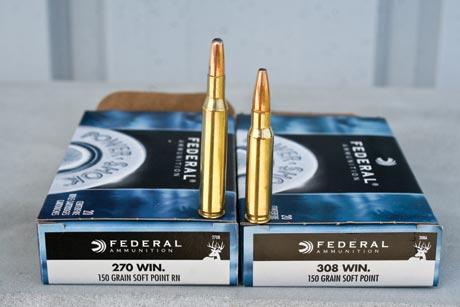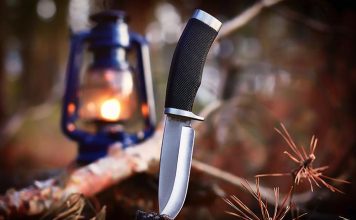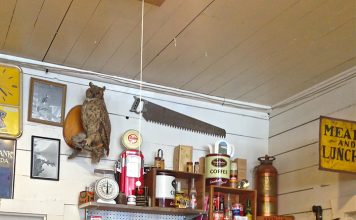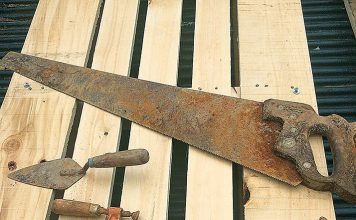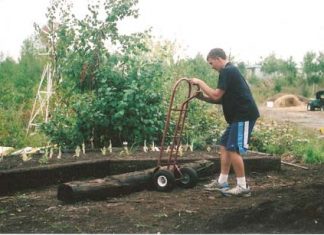 |
|
| Issue #130 • July/August, 2011 |
The purpose of the gun is to fire ammunition. It follows that the ammunition should be the correct ammunition.
This is simple. It is not hard to understand. But it’s amazing how often people make mistakes in that regard often people who should have known better. And, yes, that includes this writer: total disclosure and mea culpa right up front here.
Sometimes, the choice of a particular cartridge just isn’t right for the purpose, even though the caliber of the ammunition may be correct for the caliber of the firearm. I studied a shooting case in Illinois many years ago when a crazed killer armed with a shotgun engaged police officers in a gun duel. One deputy was in a perfect position to drop him, got him in his sights, and pressed the trigger of his 12-gauge riot gun. Unfortunately, it wasn’t loaded with the heavy buckshot pellets it was supposed to have in it on duty; someone had left it loaded with light birdshot from the last range training session. The gunfight took place outdoors in a snowstorm, and once they’d gotten through the gunman’s winter clothing, the tiny pellets couldn’t go deep enough to do anything more than irritate him. The gunman kept coming, firing all the way, until a cool-headed state trooper killed him in his tracks with a perfectly-placed 9mm pistol bullet.
|
The problem with full metal jacket
Keep practice ammo and target ammo for practice and for target shooting, and use the right stuff for more serious purposes. Consider that many Fish and Wildlife laws in the United States actually ban the use of full metal jacket rifle bullets for hunting big game. This is because bitter collective experience has taught us all that such ammunition sometimes just punches through the animals like an icepick, allowing them to run far enough that they’ll never be found, and will die later in agony from their wound and rot on the forest floor. That’s not sport. That’s not true hunting. A hunting rifle bullet will generally have a soft-nose configuration, designed to expand as it passes through flesh. It anchors the animal sooner, and more humanely, and better guarantees venison in the freezer instead of carrion for Nature’s scavengers.
The same is true of defensive handgun ammunition. The 9mm Luger cartridge, when it was only available in a pointy-nose full metal jacket configuration, earned a reputation as an impotent man-stopper in WWI, and that has continued through the long years since. Illinois State Police Ordnance unit members told me that during the years they issued the 9mm with full metal jacket (late ’60s, into the early ’70s) they never had an instant one-shot stop on a violent felon unless that bullet hit him in the brain or spine. This led ISP on an odyssey through soft-nose bullets, to hollow points at standard velocity, to the extra-fast 115-grain +P+ hollow point (1300 feet per second), and finally the .40 caliber jacketed hollow points that the department issues today. Since full metal jacket (FMJ) ammunition is seen by the Pentagon as mandated by the international rules of warfare, American soldiers and Marines have complained about its poor stopping power in 9mm since the adoption of the Beretta M9 service pistol more than a quarter of a century ago. Those complaints are still coming in from the field in Iraq and Afghanistan. Our military has responded by experimenting with a variation of Federal Cartridge’s “expanding full metal jacket” (EFMJ) 9mm round, by issuing hollow points to at least some base security and Military Police personnel stateside, and allowing Marine Expeditionary Unit-Special Operations Command (MEU-SOC) and Army Delta Force to use .45 caliber pistols that throw bigger bullets than the 9mm Beretta can.
This is also why the American police establishment has gotten away from full metal jacket and other types of non-expanding handgun ammunition. In 1999, the nation was outraged by a shooting in the Bronx where NYPD officers fired 41 shots at a man, hitting him 19 times. The fact of the matter was, the man didn’t fall until he was hit the 19th time, at which point the four involved officers all stopped shooting. All were vindicated at trial. The ammo they had been using was full metal jacket 9mm, issued by the department for reasons of political correctness. Today, NYPD issues Speer Gold Dot 124 grain +P jacketed hollow point, and the only (few) times anyone has taken anything close to that number of hits have been cases where the target was ensconced in a vehicle, and the auto bodies slowed down the bullets and reduced their power by the time they hit flesh.
Use enough gun
Famed novelist and big game hunter Robert Ruark wrote a classic book about his hunting experiences in Africa, and its title, Use Enough Gun, became a byword of advice for others who stalked dangerous animals. Ruark noted that a round designed to kill small animals as if they were hit by lightning bolts, such as the .220 Swift firing a tiny bullet weighing only 45 grains at a velocity of over 4100 feet per second, would virtually explode a woodchuck, but on a larger animal might blow itself up on the shoulder, creating an ugly flesh wound but not breaking through heavy shoulder bones and getting into vital organs for a clean, humane kill.
The wonderfully versatile .30-06 rifle cartridge depends on its user to know which particular load in the caliber is appropriate for the quarry. If you want to use your ought-six to hunt woodchucks in the off-season to make you more ready for deer season, you want to load it with something like a 110-grain bullet at 3300-plus feet per second. It will decisively kill the chuck. A generation of hunters learned in the mid-20th century, when cheap military surplus .30-06 full metal jacket ammo was available for as little as a penny a cartridge, that it would often shoot through a woodchuck leaving an “icepick wound,” and the animal would crawl back into its burrow to die a long, painful, guilt-producing death. The 110-grain varmint bullet would possibly blow up on the shoulder of a moose or an elk. For those big-antlered, big-bodied critters, you’d use something more like a 220-grain bullet at 2400 feet per second. For your ordinary white-tail deer, a 150-grain at 2970 foot-seconds would do fine, and for a bigger mule deer, maybe a 180-grain at 2700 foot-seconds, with the 165-grain bullet at 2800 feet per second being a good all-around compromise.
|
Avoiding catastrophe
So far, we’ve been talking about getting the best effect downrange. Now, let’s discuss avoiding the kind of mistake that leaves shooters blinded or otherwise maimed because they put the wrong ammunition in the gun and then, to their everlasting regret, pulled the trigger.
Ever notice that .30-30, .32 Special, and .35 Remington ammunition always comes with flat noses in factory loadings? That’s because it’s made for guns with tubular magazines, and a spire-point bullet could act like a firing pin when its sharp nose jarred the primer of the cartridge in front of it during recoil. The result could be a chain detonation in the magazine that could amputate the shooter’s forward hand. Hornady came out with a line of cartridges called LEVERevolution with soft rubber nose caps, that gave the ballistic advantage of spire point bullets without the danger pointy rounds normally pose in tube-magazine rifles.
Back in the day, when I was on the board of directors for a local gun club, I got an urgent phone call requesting me to report to the range, where a shooter had been seriously injured when his rifle blew up. I showed up with camera and notebook. It turned out to be an easy thing to reconstruct, though it would prove to be a hard thing for the shooter to recover from.
He was a hunter more than a shooter, and had come to the range to sight in his two favorite hunting rifles for deer season. Both were top-quality bolt-actions. One was chambered for the .270 Winchester cartridge, the other, for the .308 Winchester round. Not thinking he could possibly mix up the rounds, he had both rifles and boxes of both calibers of ammunition on the same shooting bench.
The moment came when he slipped a .308 cartridge into the .270. The stage was now set for tragedy.
At first thought, you’d figure that a .30-caliber cartridge could not go into the exactly-sized firing chamber of a rifle with smaller bore diameter. However, while the .270 and the .308 both evolved from the .30-06 cartridge that came along earlier in the 20th century, each evolved in different ways. The .270 is the .30-06 “necked down” to take a smaller diameter bullet, but with similar overall length. This is why a .270 and a .30-06 will both require a “long action” rifle. The .308 (also known as 7.62 mm. NATO) came along in mid-20th century, using the same bullet diameter as the .30-06, but with a shorter overall length. This is why the .308 will usually (but not always!) be encountered in what is called a “short action” rifle.
In this instance, when the stubbier .308 cartridge was placed into the .270 rifle, it was sufficiently shorter that the action locked it into the firing chamber. However, the far end of that chamber and the bore (internal diameter) of the rifle were too small for the bullet. Standard pressure for cartridges in this category is in the range of 50,000 pounds per square inch. When the oversize bullet hit the too-narrow part of the chamber-into-bore continuum, the steel of the rifle was stronger than the copper-jacketed lead of the bullet and refused passage and pressure spiked to an uncontainable level. Basically, the rifle violently exploded.
There was blood on the table and on the ground when we got there, and pieces of the rifle had been blasted over a wide radius. I doubt that we recovered them all. The shooter was severely lacerated, and because he was not wearing adequate eye protection, he suffered serious injuries to both eyes. He was not totally blinded, but he sustained injuries which, the doctors said at the time, would result in permanent visual impairment.
|
There is a lesson here.
That case involved a rifle. “Blow-ups” happen with shotguns, too. From the 19th century into the early 20th, it was in vogue to use Damascus steel in shotgun barrels. This was a legacy of lower pressure black powder. Modern smokeless powder that became state of the art in the late 19th century created greater pressures, and soon Damascus steel was rendered obsolete in the manufacture of shotguns. Unfortunately, guns are the ultimate “durable goods,” and old shotguns were fired with new shotgun shells. People started noticing that they blew up when this happened. As the old guns got older and the steel deteriorated, and the new shells became more and more powerful, they blew up more often.
By the time this old man started learning about guns in the 1950s, it was already understood that you didn’t fire modern shotgun shells in old Damascus barrel shotguns! Unfortunately, this wasn’t understood by everybody, and the tragic gun blow-ups kept happening. Half a century later, this writer owns exactly one Damascus barrel shotgun. It’s a fine old Lefever double-barrel I inherited from my dad. When I was young, Dad would fire light trap loads through it. The gun is a half a century older now, and so am I. I follow a simple rule with it: I don’t fire it at all. It remains silent, a legacy of the past, like the stand-up 1940s radio I also inherited. It’s a decoration, not a tool anymore. I would advise anyone reading this to treat their Damascus barrel shotguns the same way.
With shotguns, even modern ones, there can also be problems with loading the wrong size of shell. If a 20-gauge shotgun shell is inserted into the larger-diameter barrel of a 12-gauge shotgun, it can slip down that barrel and stop about halfway, where the rim of its cartridge head begins to hit the constriction that is built into a shotgun barrel. The shooter pulls the trigger and nothing happens because, after all, there is no longer a shell with a primer held in front of the firing pin…or maybe the shooter checks the chamber, sees nothing there, and thinks he forgot to “chamber a round.” So, a live 12-gauge shell is now inserted.
Later, it comes time to fire the shotgun. The trigger is pulled. A powerful 12-gauge shell discharges its payload in the chamber, sending it toward the muzzle and it hits the primer at the base of the trapped 20-gauge shell that is lying unseen partway down the barrel.
Two horrible things happen at once. First, the lead payload is now stopped inside that “pressure vessel,” and pressure spikes explosively. Second, the 20-gauge shell is simultaneously detonated, not inside the heavy circumference of steel that is the firing chamber, but in the tapered portion of the gun barrel that may not be strong enough to contain the resulting pressure.
The result is a devastating explosion halfway down the barrel, right about where the shooter’s forward hand is located in a normal firing hold. I’ve heard stories of all the fingers being blown off, and entire hands being amputated by the blast in a “field avulsion.”
This is why it is imperative to keep 20-gauge shells separate from 12-gauge shells. It is why the ammunition industry color-codes 20-gauge shotgun shells yellow, and 12-gauge shells other colors (red, green, black, blue, whatever).
With shotguns, remember that shotshells come in different lengths. Standard length for 12- and 20-gauge shotguns is 2¾ inches. However, 3-inch Magnum 12- and 20-gauge shotguns have existed for a very long time, and we now even have 3½-inch Magnum 12-gauge shells, duplicating the payload of larger-diameter 10-gauge shotshells. With a break-open single- or double-barrel shotgun, you’ll see and feel the incompatibility immediately if you try to load a shell that’s too long. However, with a shotgun that feeds from a tubular magazine, such as the typical semiautomatic shotgun or pump gun, you can run into a treacherous problem: the ammunition will go into the magazine, but it won’t cycle into the firing chamber. A longer shell simply isn’t going to want to go from the magazine of your pump or auto into a chamber that isn’t long enough.
In the early 1980s, I ran across a scary example of this in Idaho. The volunteer Auxiliary Police attached to the regular local police force offered to clean all the department’s shotguns, an onerous chore which the full-time cops gratefully allowed them to do. The enthusiastic volunteers realized that the department’s ammo was getting pretty old, so they chipped in to buy some new shotgun shells. Figuring the cops would want the most powerful ammo available, they bought new ammo of the most potent kind available at the gun shop: 3-inch Magnum 12-gauge buckshot.
Which would have been fine, except that the department shotguns had 2¾-inch chambers. Because shotguns in police vehicles are traditionally carried with empty chambers and full magazines, they reloaded the magazines with the long shells until no more would go in, and put them back in the patrol cars.
Between then and regular shooting qualification, the guns remained in that condition. Then the time came when one of the career cops was arresting a man who didn’t want to be arrested. There was a fight and the bad guy got the cop’s service handgun out of his holster and started firing it at the policeman. The officer ran around the car, dove into the front seat, and grabbed the shotgun out of the dashboard rack so he could shoot back. He tried to pump the first shell into the chamber and it stuck in place before the action could close.
The young officer involved was apparently a very impressive physical specimen, and the strength of adrenaline was upon him. That’s the only way I can explain what happened: he managed to physically force the oversize 3-inch plastic shell into the 2.75-inch steel chamber, and fire one shot. That shot fire-formed the wrong-size shell into the chamber and hopelessly jammed the shotgun but it also struck and instantly killed the would-be cop-killer, saving the officer’s life.
|
Handguns, too…
Handguns are not immune to “wrong ammo” problems, either. In the latter 19th century, Colt manufactured many revolvers in caliber .38 Long Colt and, not realizing that Smith & Wesson would soon develop the longer and more powerful .38 Special cartridge, bored the cylinder chambers straight through. They could not have known that a far more powerful cartridge of the same diameter, would come along in 1935, Smith & Wesson’s .357 Magnum. The cylinder dimensions would allow these much more powerful cartridges to be fired, with the potential of turning a gun designed for low-pressure black powder cartridges into a small hand grenade that might be more dangerous to the shooter than to his opponent.
Today, the most popular police pistol cartridge is the .40 Smith & Wesson, and among state troopers, the .357 SIG cartridge is close on its heels in popularity. You can put a .40 barrel in a .357 SIG, or a .357 SIG barrel in a .40, and they’ll work fine: useful versatility, there. Unfortunately, the .40 with a .357 SIG barrel may still be marked “.40” on the slide, and vice versa, and if someone puts .40 ammo in a .40 with a .357 SIG barrel, the cartridge won’t chamber and the gun won’t fire. If someone puts .357 SIG ammo in a gun marked “.357 (SIG)” but fitted with a .40 barrel, the shot will fire, but the undersize bullet will rattle down the barrel and go wide of its target, and the pistol will most likely jam.
General advice
If you’re a parent, you’ve probably heard yourself pontificate to your children, “Use things the way they’re meant to be used!” When you’re dealing with guns, get in touch with your inner child and remind yourself of the same advice. We must use the ammo the gun was designed for, and the load appropriate to the purpose.
The bottom line? Use the right stuff. Plan ahead. When you need to fire that gun for something serious, you don’t want it to blow up or jam, you want it to function as intended.


